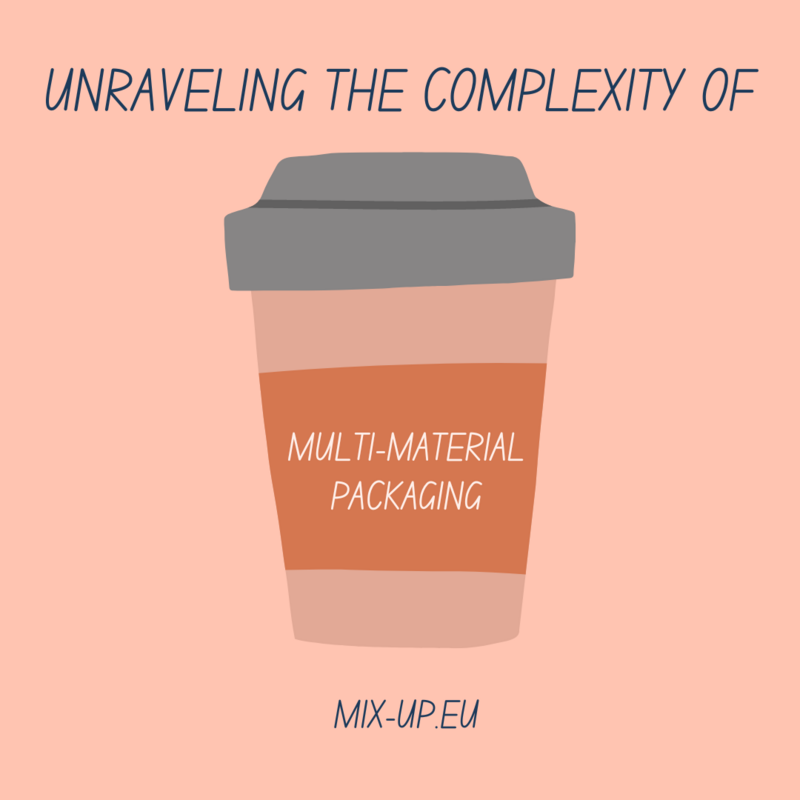Unraveling the Complexity of Multi-Material Packaging
In a world where convenience, aesthetics, and function often intertwine, multi-material packaging has found its niche, enveloping countless products we encounter daily. Yet, beyond the sheen and practicality of these materials lies a significant environmental problem. This article dives deep into the intricacies of multi-material packaging, its myriad applications, its challenges for recycling, and the transformative potential of upcycling.
Everywhere we look, multi-material packaging plays a crucial role in our daily lives. Whether securing our morning juice, preserving our medications, or even wrapping gifts, these materials have nestled into our routines. But why the industry gravitates toward them, and what implications do they hold for the environment?
Imagine your morning juice box. It's not just a simple cardboard structure. Often, it's a sophisticated ensemble of polyethylene, aluminum foil, and paper. Such a blend gives the carton its sturdiness, resistance to external factors like light, impermeability, and aesthetic appeal.
However, only some packaging with multiple materials can be labeled multi-material.' If a jar of jelly has a sticker on it, despite the presence of both glass and paper, it doesn't qualify. Why? In this case, the primary material, glass, overwhelmingly dominates the composition. Apart from juice boxes, we see multi-material packaging in the form of pill packs (melding plastic with aluminum), some food wrappings, and specific glossy gift papers. These should not be confused with composite substances used in construction, which might fuse two elements for strength but serve a different purpose.
Why Opt For Multi-Material Packaging?
By matching different materials, manufacturers can cherry-pick the best qualities from each. Consider butter wrappers, which stand firm, repel grease, and still feel light. They cater to a spectrum of needs from durability to aesthetics to practicality. For instance, medication packs shield tablets from damage and external elements yet offer users easy access without tools—a boon for the elderly or those with limited dexterity.
Challenges with Multi-Material Packaging
Despite their advantages, there's a flip side. Integrating materials often spells trouble when it's time for recycling. Disposing of these items is more complicated too. Despite having 'paper' or 'carton' in their names, some things aren't fit for paper recycling. It's a challenge that often leaves consumers scratching their heads.
The Right Way to Dispose
Think of these materials as closely related to plastics. Unless they include elements like wood or rubber, they're usually best placed in similar bins. Whenever possible, aim to separate distinct components. For instance, a yogurt container's aluminum lid should be detached before disposal.
Multi-Material Packaging and the Green Debate
Take the widely-used juice carton as a case study. While manufacturers might champion its recycled content and their reduction efforts of certain materials, it doesn't negate the fact that recycling facilities for these are only sometimes available. Some environmental groups have voiced concerns about their eco-impact. There's a growing demand for a more sustainable approach, even with upcoming regulations to minimize ecological harm.
Consumer Power in the Packaging World
Simplicity is powerful. Single-material products are more recycling-friendly. Thus, local brand bottles that require deposits might be a greener choice than cartons. Even staple items, typically housed in cartons, are now available in alternative containers. When selecting wrapping materials, go for the ones free from extra coatings or shiny finishes. If multi-material packaging is unavoidable, like with certain medications, ensure they are in the correct recycling bins.
Navigating the Future: From Recycling to Upcycling Mixed Plastics
In the undulating realm of scientific advancement, the horizon is painted with the promising potential of the recycling of mixed plastics. As we all stand on the cusp of a transformative era, our research at MIX-UP and many other projects is tirelessly steering the world towards a future not just of recycling or downcycling these complex materials but upliftingly towards upcycling them. The crux of this vision lies in the essence of upcycling, which transcends mere waste management. Instead of merely turning waste into something of equal value, upcycling envisions metamorphosing it into products of even higher value. Imagine a world where your discarded plastic bottle doesn’t just become another plastic bottle but evolves into a durable component of a building or a piece of eco-fashion. This is the upcycled future science is striving for.
In the laboratory cauldrons of today, we are delving deep into chemical formulations and molecular structures. The goal? To reinvent the way we perceive and handle mixed plastics. Every experiment, every failed test, is a step closer to unlocking the methods that will allow these plastics to rise from their waste status to assume a higher purpose. And the ripples of this science are expected to impact not just our waste bins but the core of industrial production.
The industry, riding on this wave of innovation, bears a dual responsibility. As we await the golden age of plastic upcycling, manufacturers must intertwine the life-cycle thinking into their DNA. Every product must be seen through sustainability, from conception to eventual disposal. After all, today's plastics are tomorrow's resources—the future calls for a harmonious ballet between science and industry. As research continues its relentless pursuit of upcycling breakthroughs, the industry must align its gears, ensuring that every piece of plastic they birth is done with a vision of its holistic journey. It's not just about creating; it starts with purpose, foresight, and a promise for a brighter, more sustainable tomorrow.


